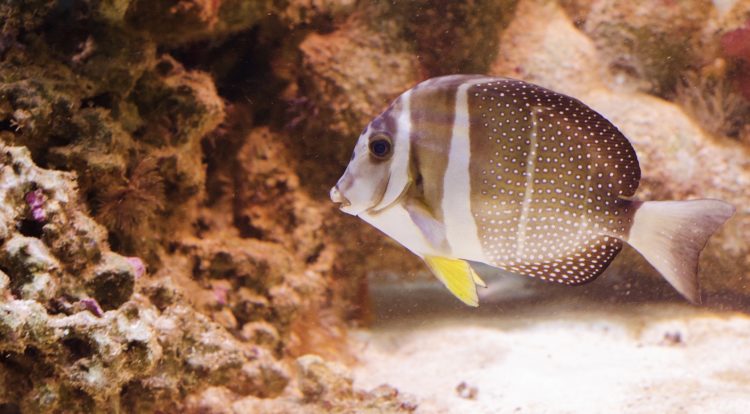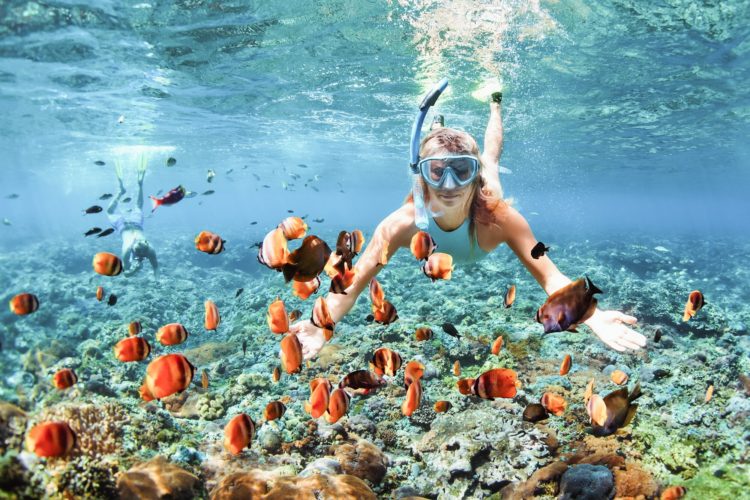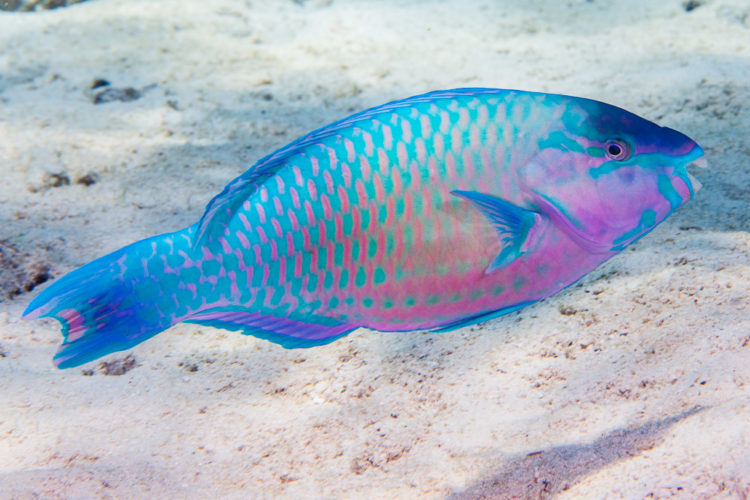The beauty of Hanauma and the residents that live within are the reasons we snorkel. We haven’t had a fish spotlight in a while, but this month we’re going back to the basics and highlighting one of our favorite Hanauma Bay locals – the surgeonfish!
When it comes to the worldwide surgeonfish population, there are over 80 different species, 25 of which live within Hawaiian waters. While these gorgeous fish are found in a variation of colors, they all have the same basic anatomy. They have two spines, one on each side of their bodies that normally lay flat in tight grooves. When the fish is provoked, or in a time of danger, it will flip its tail to reveal its spines that pop out like tiny knives. Those knives resemble a surgeons’ scalpel, therefore giving them the name “surgeonfish”.
Surgeonfish feed on algae and can usually be found near rocks that receive a lot of filter sunlight. You typically find them in shallow waters of the coral reef, grazing either in small groups or alone. You will rarely fine them in large schools.
Depending on their specific specie, they can grow to be as large as 22 inches, making them some of the easiest fish to spot in the bay. The largest surgeonfish found in the local area is the Yellowfin Surgeonfish. These fish will eat most types of algae available and average a length of 21 inches. They have a light tan body with yellow pectoral fins and markings around the eyes. While their size is substantial, they are more challenging to spot because of their light color and nominal markings.
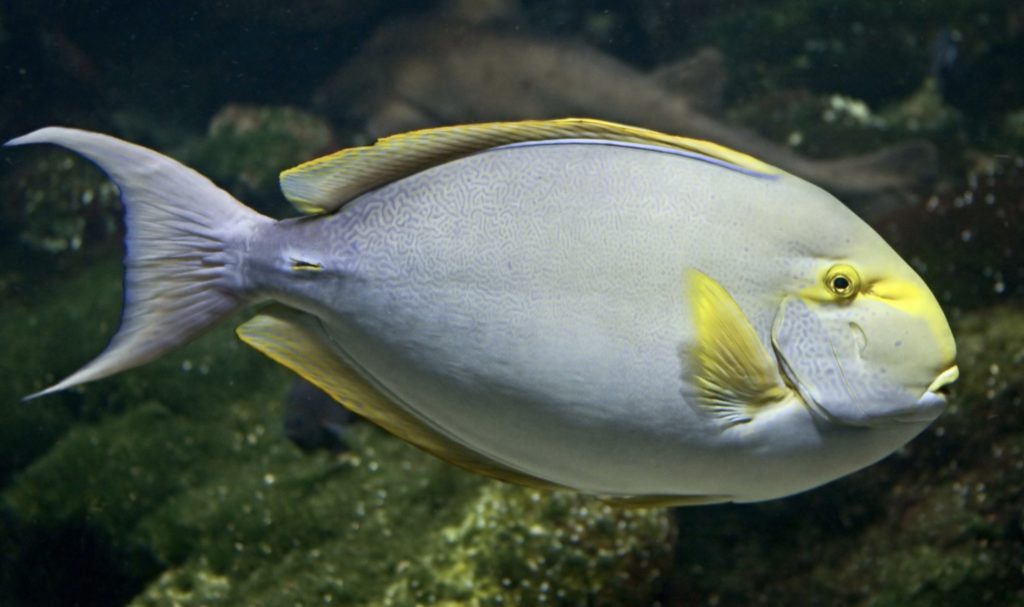
Another resident of the bay that may be a little easier to see is the Whitespotted Surgeonfish. As their name suggests, they are white and black with white spots that cover nearly two-thirds of their bodies. They are typically found where the surf is crashing, grazing on seaweed. Sometimes their spots act as a type of camouflage to resemble the surrounding bubbling water.It should be to no surprise that we are in love with Hanauma Bay and all that it has to offer. These are just a couple of the many varieties of surgeonfish that can be found at our favorite place in the world. We hope you all get the chance to experience the magic of Hawaii’s underwater paradise, and count on you to come to us to make it happen! Give us a call or book an excursion right here on the site. Aloha!
For the most part, snorkeling is a very freeing activity for the whole family. Here at Hanauma Bay Snorkel Adventures we have some simple guidelines to guarantee a great time had by all. Keep reading for our short list of the do’s and don’t’s of snorkeling.
DON’T touch the coral. It may not look like it, but coral reef is a living organism that both houses and feeds thousands of underwater creatures. As snorkel enthusiasts and defenders of the bay, we ask that you try not to stand on or kick the reef.
DO use biodegradable sunscreen. Studies have shown that sunscreens with oxybenzone and octinoxate are harmful to the reef and can contribute to coral bleaching. In general, it’s safe to stay away from sunscreens with excess oil and harmful chemicals.
DON’T interfere with the marine life. We understand that the point of snorkeling is to observe Hawaii’s underwater paradise; however, we need to remember that observe does not mean interfere. Messing with the motion of the ocean could be hazardous to both you and the animals.
DO respect other snorkeler’s personal space. Snorkeling is a rush, it’s an opportunity to see marine life first hand; but most people do not want you grabbing their arm or pulling their leg to make sure they see the parrotfish that’s two feet away from you. Everyone snorkels at their own pace, and most people need to concentrate in order to be able to enjoy their snorkeling experience.
DON’T feed the fish. Feeding the marine life can throw off the natural flow of the bay. While sharing is usually caring, we advise otherwise when snorkeling — the fish have plenty of food.
DON’T take anything with you. Aside from the belongings you brought to the beach — all starfish, rocks, pieces of coral, fish, urchins and shells should remain where they were found.
While snorkeling is a family friendly activity, there are some DO’S AND DON’T’S that ensure an incredible experience. Here at Hanauma Bay Snorkel, we are all about making memories with the people you love. Go over these guidelines with your ohana, then head to the beach. We’ll be waiting for your call!
Happy August everybody! The beauty of Hanauma Bay and the marine life that live in it are the whole reason we snorkel. This month on the blog weʻre going back to the basics with a spotlight on one of our favorite park residents— the parrotfish!
One of Hawaii’s most loved fish is in fact the parrot fish. Well known for their vibrant colors, you may also see them featured as entrees in popular meals of several restaurants in the state. Easily recognized by their unique mouth shapes, parrot fish have teeth protruding from their jaw, giving them a beak-like mouth resembling the tropical fowl that they’re named after.
Though they’re technically considered herbivores, parrotfish can be found in Hanauma Bay with diverse diets including many polyps found on the reef. Utilizing their beaks, parrotfish easily collect the organisms from the reef’s rock-like surface.
Like many species of fish the parrotfish travel in schools of varying sizes (7” to 24”). They are diurnal creatures that spend their days eating off the coral and then sleep in the security of the small cracks and crevices formed between the reef and rocks. Some parrot fish can be found secreting a mucus to deter any would-be predators.
In Hawaii you may find seven different types of parrotfish roaming the waters— stareye, yellowbar, spectacled, bullet head, regal, pale nose, and redlip.
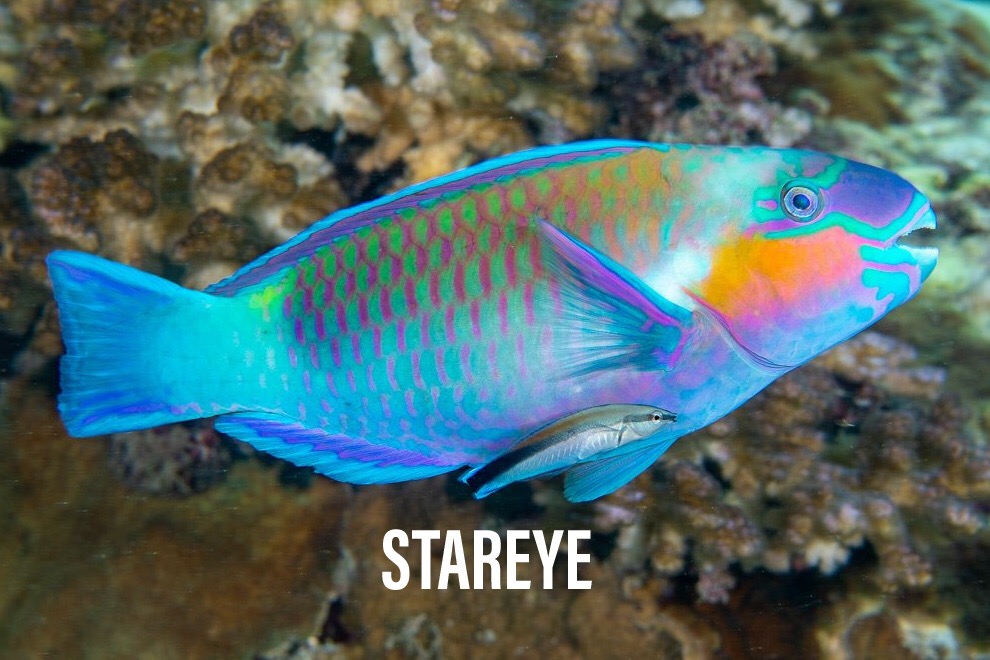
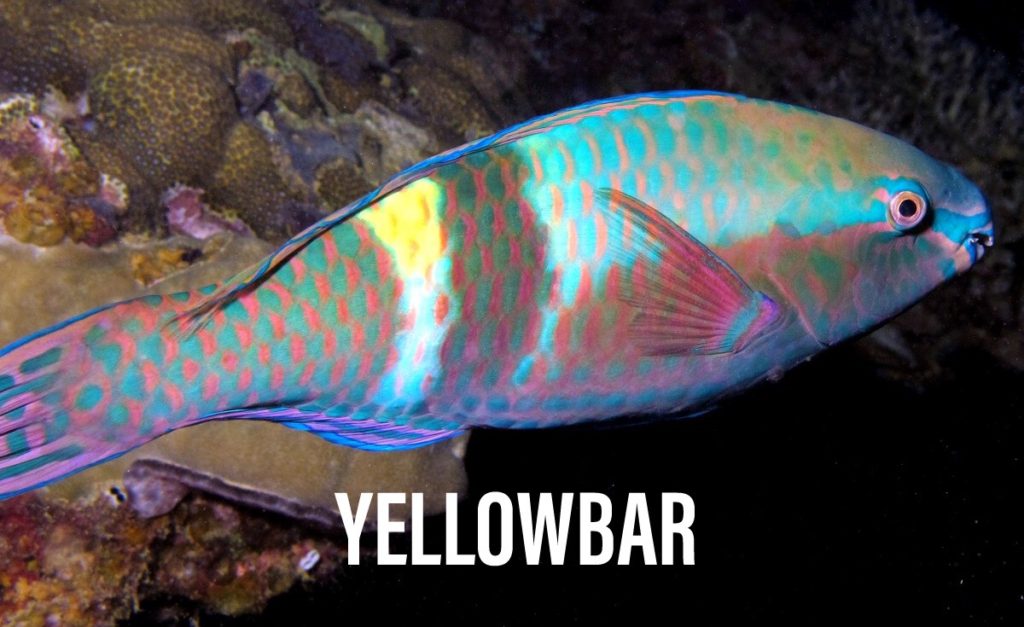
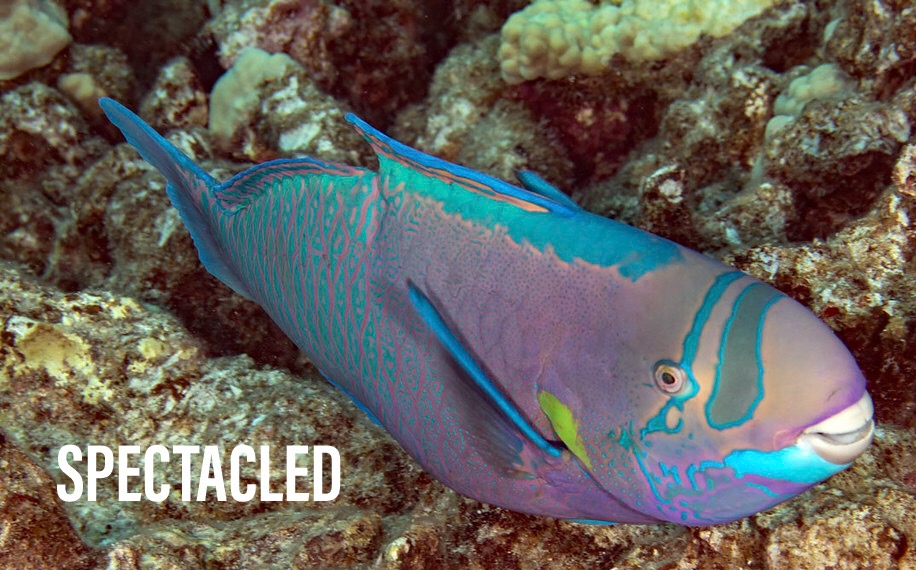
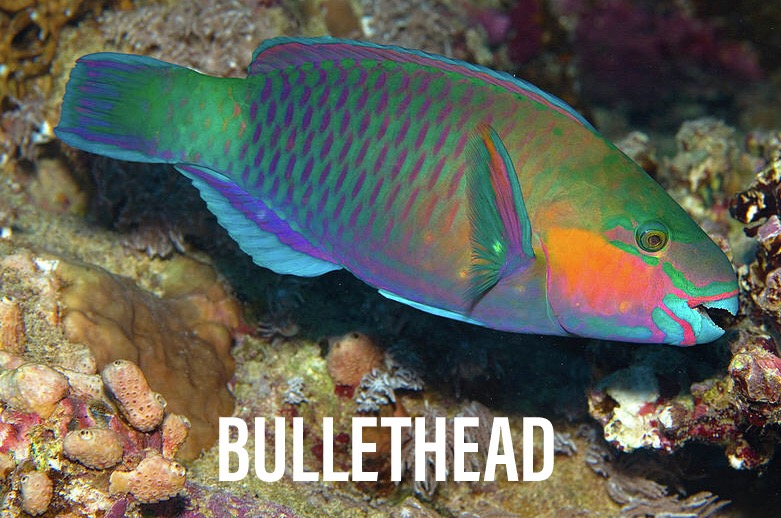
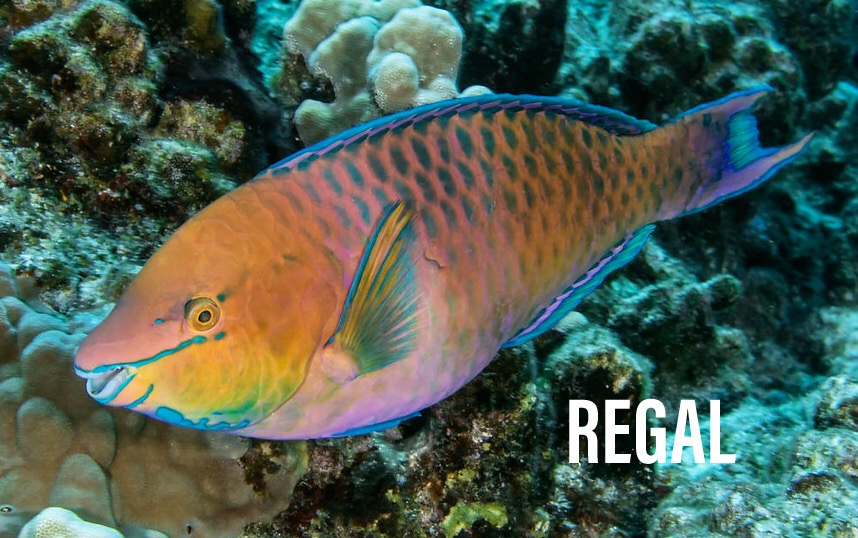
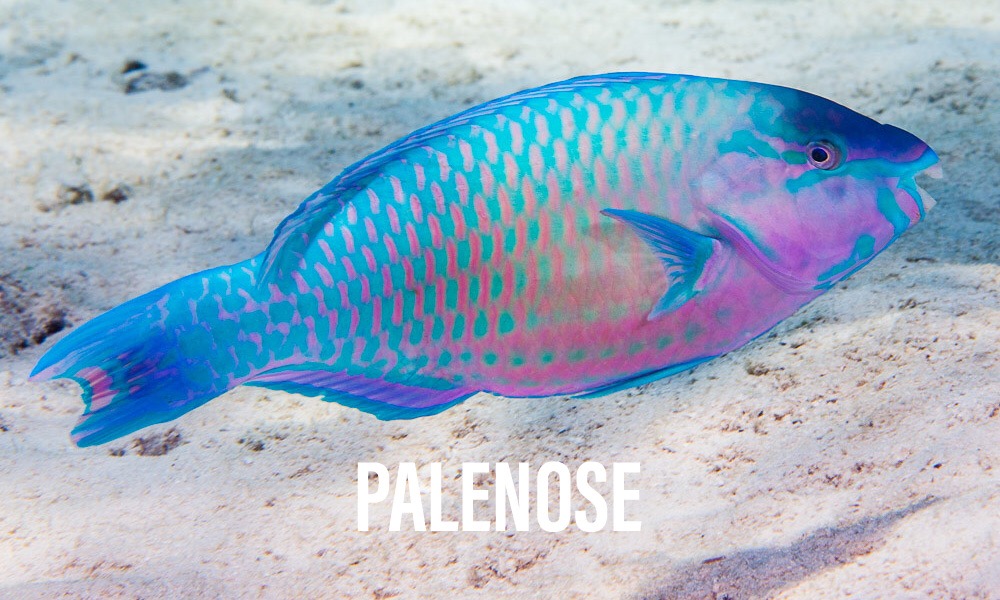
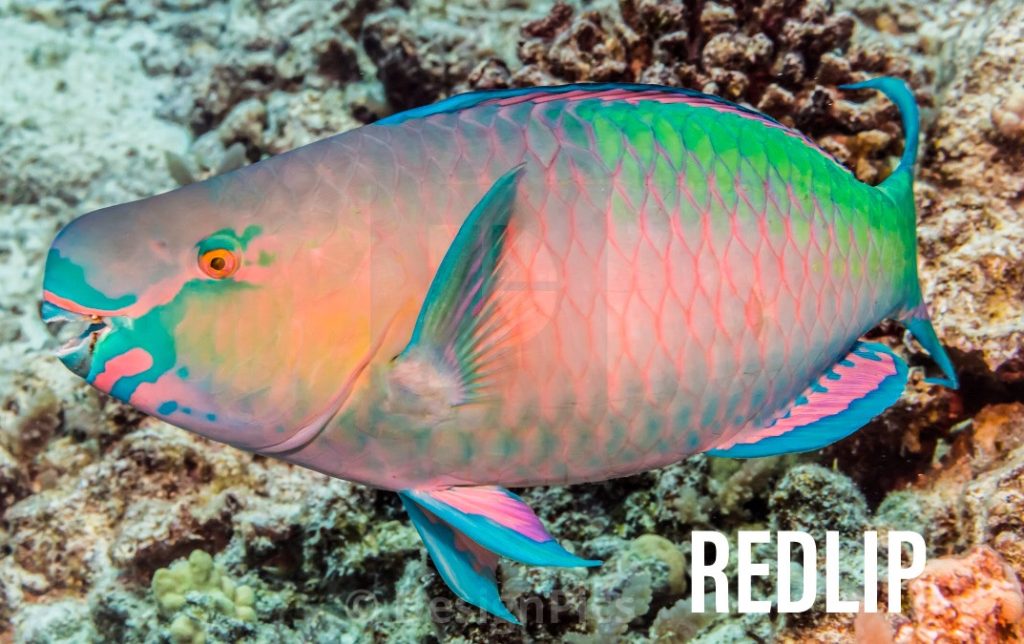
It’s safe to say we are obsessed with the bay and all of the beauty it has to offer. We absolutely love being able to call Hawaii home and Hanauma Bay work (though it feels more like play!). We find it essential that everyone experience the underwater magic at least once in their lifetime, and hope you’ll come to us to make it happen. Book yourself a snorkeling excursion right here on the website, or give us a call to learn more about our services. Aloha!

